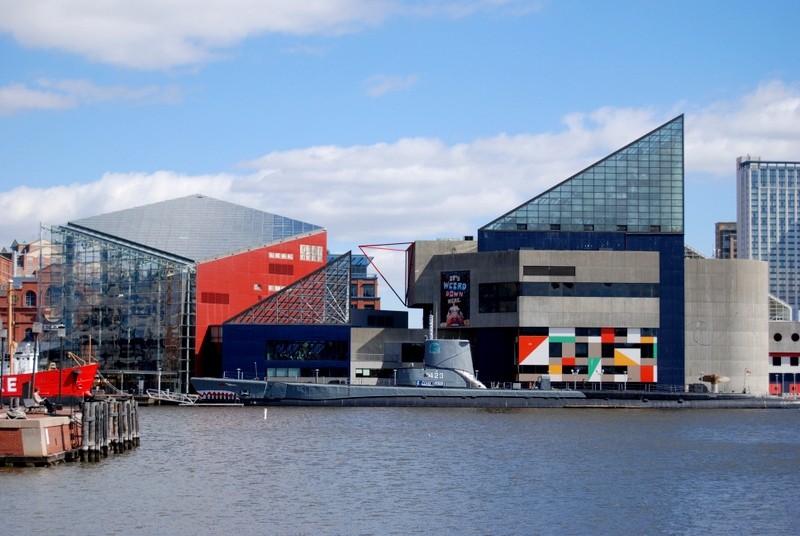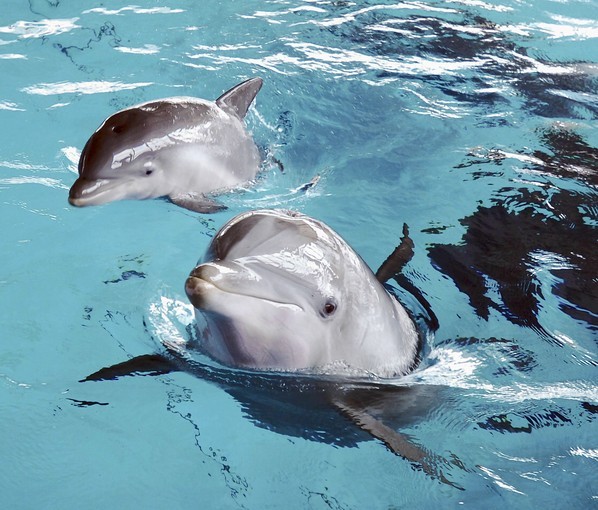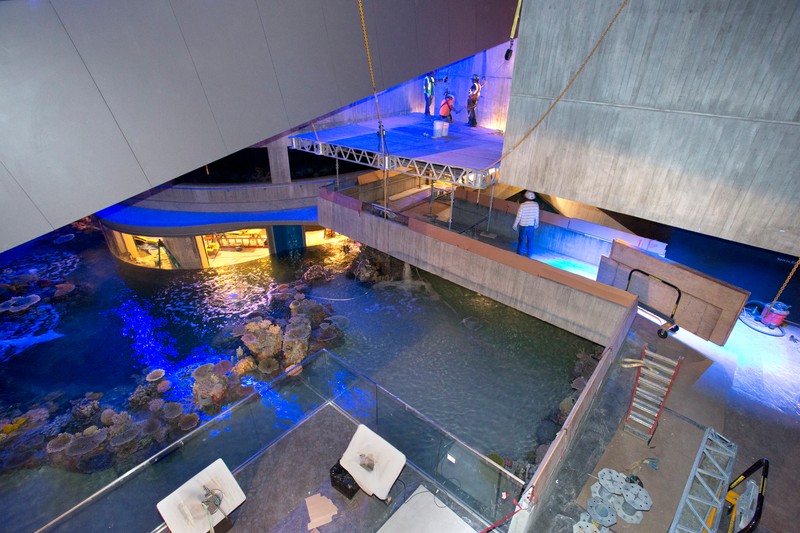National Aquarium
Introduction
Text-to-speech Audio
Images
The National Aquarium was designed by Peter Chermayeff of Peter Chermayeff LLC and Bobby Poole of Chermayeff, Sollogub & Poole.

Beau, Foster, Nani, Maya, Spirit, Chesapeake, Bayley, and Jade are the names of the eight Atlantic bottlenose dolphins.

In 2013, the Blacktip Reef exhibit was added to the National Aquarium.

Backstory and Context
Text-to-speech Audio
While the National Aquarium is a beloved attraction, many people were opposed to its construction. In 1976, Baltimore Mayor William Donald Schaefer desired to revitalize the Inner Harbor. A key element of his proposal was the construction of a large-scale aquarium. An aquarium seemed like an enticing concept to Baltimore’s residents, but there were not sufficient funds for the project. Opponents were concerned that the aquarium would not attract enough tourists to be a sufficient source of revenue for Baltimore City. Debate ensued between Mayor Schaefer’s administration and opponents; Baltimore citizens ended this bickering with a bond referendum that allowed Schaefer’s idea to become a reality
The Baltimore Aquarium officially opened to the public on August 08, 1981. Mayor Schaefer estimated that 600,000 visitors would attend the aquarium during its opening year. However, he greatly underestimated the aquarium’s popularity because 1.6 million people visited the aquarium during its first year. The aquarium’s popularity grew exponentially after U.S. Senator Paul Sarbanes passed a bill that designated it as “The National Aquarium.” This designation was a misnomer because the actual National Aquarium was in the Herbert C. Hoover Building in Washington, D.C. For the next 24 years, the United States had two “national aquariums.” In September of 2003, the National Aquarium Society Board of Directors worked with the National Aquarium Board of Directors to consolidate the two aquariums into one aquarium with two different locations. The primary reason for consolidation was to enhance educational and conservation efforts. In 2013, the federal government closed the Washington, D.C. venue for repairs; thus, aquarium workers relocated all of the species to Baltimore. These species are still in Baltimore as the repairs are taking longer than expected. Since its opening, the National Aquarium has welcomed over 50 million visitors and educated approximately 2.5 million students. Additionally, the National Aquarium reaps a 314 million dollar profit for Baltimore City and the State of Maryland each year. Mayor Schaefer’s idea in 1976 received mass criticism, but it was an intelligent investment.
The National Aquarium’s profits have provided funds for vast conservation efforts. Most notably, the National Aquarium has made great strides to combat environmental problems in the Chesapeake Bay Watershed. For instance, wetland revitalization and habitat restoration are top priorities for the National Aquarium. In 2014, aquarium workers planted over 14,000 native wetland grasses. Furthermore, the National Aquarium leads campaigns to remove debris from historic locations such as Fort McHenry. On the international level, the aquarium sponsors the development of marine sanctuaries, which provide refuge to endangered species. The National Aquarium was influential in establishing the Stellwagen Bank National Marine Sanctuary, which has reduced whale strikes in shipping lanes by 81%. The National Aquarium also conducts groundbreaking research, especially on jellyfish and bottlenose dolphins. In fact, the aquarium is home to eight Atlantic bottlenose dolphins. The National Aquarium also conducted research on aquatic species in the Gulf of Mexico following the 2010 B.P. Oil Spill. The National Aquarium has become a leader in aquatic conservation and research efforts.
